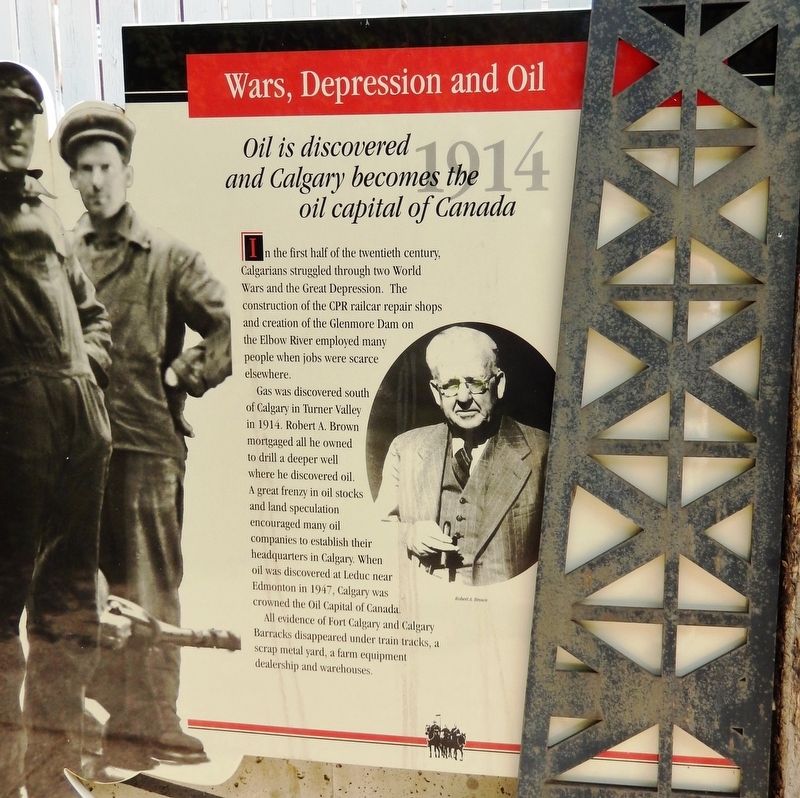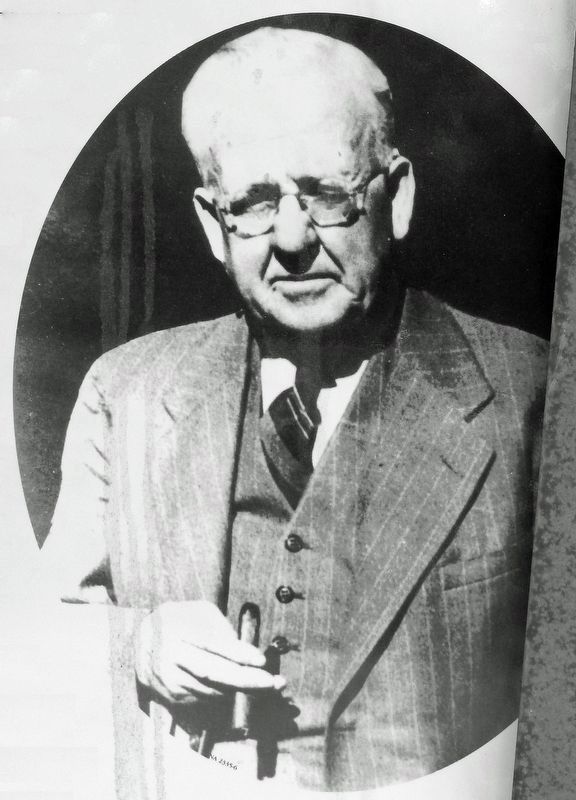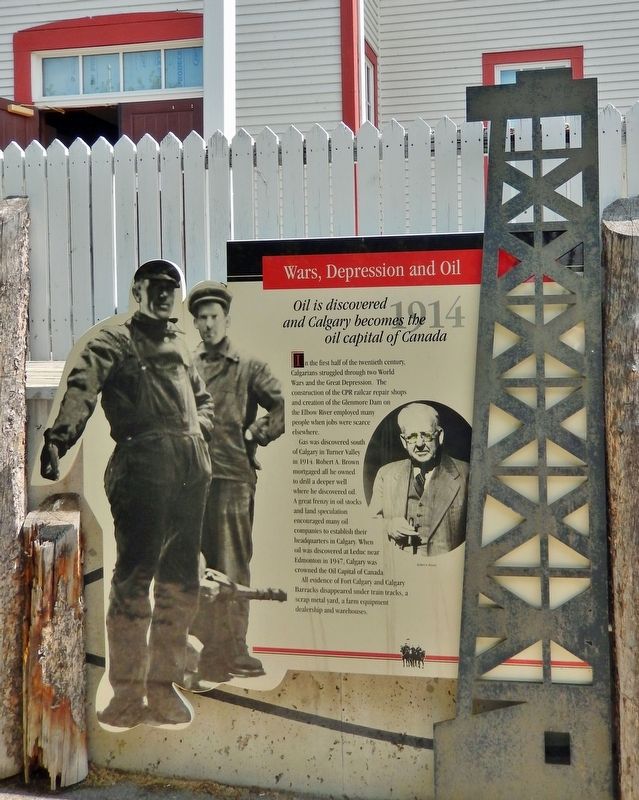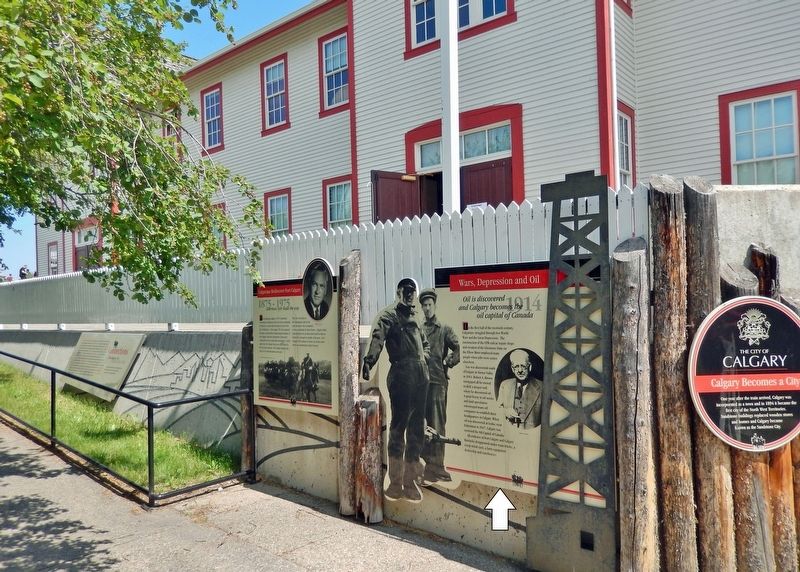East Village in Calgary in Calgary Metropolitan Region, Alberta — Canada’s Prairie Region (North America)
Wars, Depression and Oil
Oil is discovered and Calgary becomes the oil capital of Canada
— 1914 —
In the first half of the twentieth century, Calgarians struggled through two World Wars and the Great Depression. The construction of the CPR railcar repair shops and creation of the Glenmore Dam on the Elbow River employed many people when jobs were scarce elsewhere.
Gas was discovered south of Calgary in Turner Valley in 1914. Robert A. Brown mortgaged all he owned to drill a deeper well where he discovered oil. A great frenzy in oil stocks and land speculation encouraged many oil companies to establish their headquarters in Calgary. When oil was discovered at Leduc near Edmonton in 1947, Calgary was crowned the Oil Capital of Canada.
All evidence of Fort Calgary and Calgary Barracks disappeared under train tracks, a scrap metal yard, a farm equipment dealership and warehouses.
Topics. This historical marker is listed in these topic lists: Industry & Commerce • Railroads & Streetcars. A significant historical year for this entry is 1914.
Location. 51° 2.694′ N, 114° 2.683′ W. Marker is in Calgary, Alberta, in Calgary Metropolitan Region. It is in East Village. Marker can be reached from 9 Avenue Southeast, 0.3 kilometers east of 6 Street Southeast, on the left when traveling east. Marker is located along the interpretive trail at Fort Calgary National Historic Site. Touch for map . Marker is at or near this postal address: 750 9 Avenue Southeast, Calgary AB T2G 5E1, Canada. Touch for directions.
Other nearby markers. At least 8 other markers are within walking distance of this marker. The City of Calgary (here, next to this marker); Calgarians Rediscover Fort Calgary (here, next to this marker); The Frontier Community Disappears (here, next to this marker); The Mounties Sell Calgary Barracks (here, next to this marker); Connections (here, next to this marker); The NWMP Build Calgary Barracks (a few steps from this marker); The Train Arrives in Calgary (a few steps from this marker); An Outpost on the Bow River (a few steps from this marker). Touch for a list and map of all markers in Calgary.
Related markers. Click here for a list of markers that are related to this marker. Fort Calgary National Historic Site
Also see . . .
1. History of the Petroleum Industry in Canada: Turner Valley.
In early 1914, oil fever swept Calgary and other parts of southern Alberta. Investors lined up outside makeshift brokerage houses to get in on exploration activity triggered by the May 14, 1914 discovery of wet gas and oil at Turner Valley, southwest of Calgary. Reportedly, in one 24-hour period, investors and promoters formed more than 500 "oil companies."(Submitted on May 4, 2023, by Cosmos Mariner of Cape Canaveral, Florida.)
2. Turner Valley oilfield discovery celebrated 100 years later.
(CBC News, 5/13/2014) The centennial celebration of the oilfield was held Wednesday at the site of the Dingman No. 1 Discovery Well located at the Turner Valley Gas Plant. The discovery of petroleum 100 years ago led to the creation of Alberta's first natural gas plant, which helped start the modern era of oil and gas exploration and processing.(Submitted on May 4, 2023, by Cosmos Mariner of Cape Canaveral, Florida.)
3. Robert Brown Sr., Canadian Petroleum Hall of Fame.
With no training in geoscience, Brown nonetheless became convinced Turner Valley's gas fields concealed deeper crude oil reserves, although he offered little evidence to support the theory. He found financial backing in the worst days of the Great Depression, forming a public company, Turner Valley Royalties Ltd. An innovator, Brown adopted the concept of paying out a well's income to investors as a royalty roughly 50 years before oil and gas income trusts were developed. Investors backed Brown when his discovery well, Turner Valley Royalties No. 1, came in June 16, 1936, flowing light oil at 850 barrels per day. For Turner Valley, the ensuing oil boom meant years of investment. For Brown, it brought wealth and secured his place in the history of Alberta's oilpatch.(Submitted on May 4, 2023, by Cosmos Mariner of Cape Canaveral, Florida.)
Credits. This page was last revised on May 4, 2023. It was originally submitted on May 3, 2023, by Cosmos Mariner of Cape Canaveral, Florida. This page has been viewed 56 times since then and 10 times this year. Photos: 1, 2, 3, 4. submitted on May 4, 2023, by Cosmos Mariner of Cape Canaveral, Florida.



